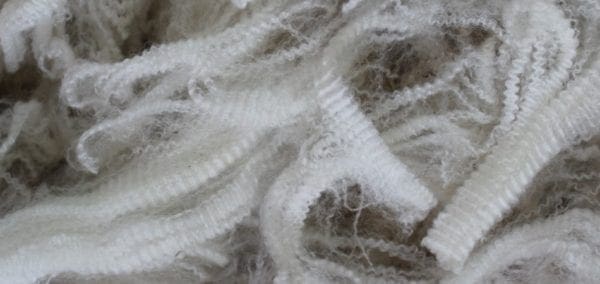What is Wool?
Wool is an intricate natural fibre procured from the fleece of sheep. Wool sheep are classified as Ovis aries aries. Merino, Rambouillet, Blue Faced Leicester, and Corriedale breeds are among the best-known wool sheep.
Worldwide, there are estimated to be more than 1,000 different breeds of sheep. Sheep grow wool in a range of colours, textures and lengths. Wool can therefore vary considerably, depending on the breed of sheep, country of origin, and even the weather can play a role.
Wool composition: protein at its core
At the heart of wool’s composition is a protein called keratin. Keratin is a fibrous and flexible protein that forms the basis of not only wool but also human hair, nails, and other animal fibres. This protein provides wool with its remarkable attributes such as elasticity, strength, and the ability to withstand repeated bending and stretching.

Complex structure: from macro to micro
Wool’s structure is a captivating interplay of various levels, each contributing to its unique properties.
At the macro level, wool fibres consist of cuticle scales that resemble shingles on a roof. These scales are arranged in an overlapping pattern, offering protection to the inner layers of the fibre.
Zooming in, the middle layer, known as the cortex, constitutes the bulk of the wool fibre. It is here that the keratin fibres are tightly bundled, forming a helical arrangement. This helix provides wool with its inherent elasticity, allowing it to return to its original shape even after being stretched.
Beyond the cortex lies the medulla, a central channel found in some wool fibers. This layer is responsible for the crimp characteristic seen in wool. Crimp refers to the natural waviness or curliness of wool fibers, contributing to the fiber’s insulating properties by trapping air and enhancing warmth.
How wool is measured: micron
In the world of wool, a “micron” is a fundamental term used to measure the fineness of wool fibers. It serves as a crucial indicator of the quality and texture of woolen products.
A micron is a unit of measurement that represents one-millionth of a meter, or about 0.000039 inches. When applied to wool, the term “micron” refers to the average diameter of individual wool fibres. It provides a standardized way to quantify the thickness of these fibres.

Significance for Wool Quality
The micron measurement is of paramount importance in determining the quality and characteristics of wool. Finer wool fibres have a smaller micron measurement, while coarser fibres have a larger one.
Generally, the lower the micron count, the softer and more luxurious the wool feels. Fine wool is often preferred for garments that come into direct contact with the skin, as it is less likely to cause irritation or itchiness.
Applications
Micron measurements guide various aspects of the wool industry, from selecting sheep for breeding to categorizing wool for specific end uses. Wool from different parts of a sheep’s body can vary in micron count; for example, wool from the neck and legs tends to be coarser than that from the back.
Wool with a lower micron count is often associated with luxury products and clothing, while wool with a slightly higher micron count might be suitable for outerwear, blankets, and upholstery due to its durability.
Understanding the concept of a micron is essential for appreciating the diverse qualities that wool can exhibit. Wool experts blend different wools to achieve particular softness or textures and performance. This ability to blend gives wool endless potential.
